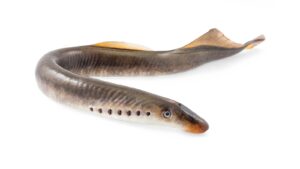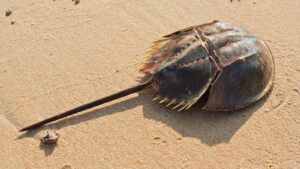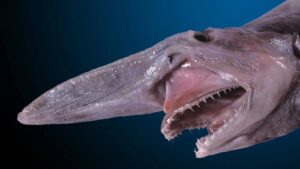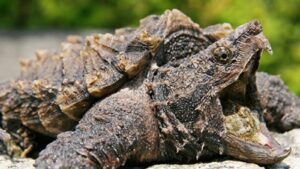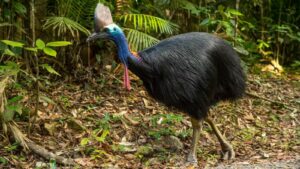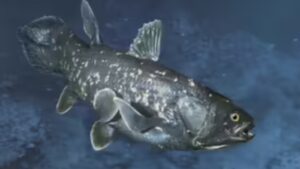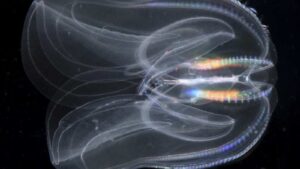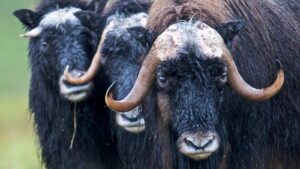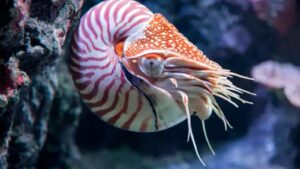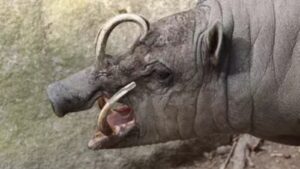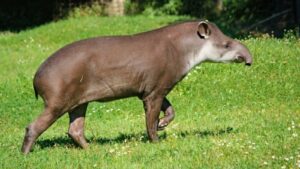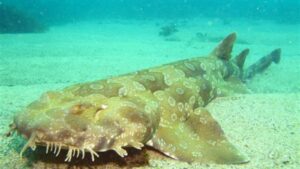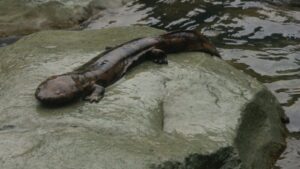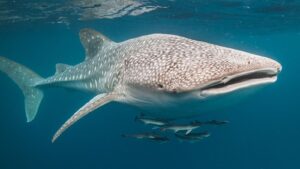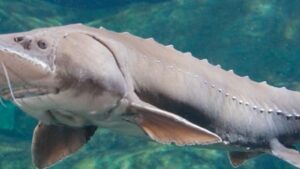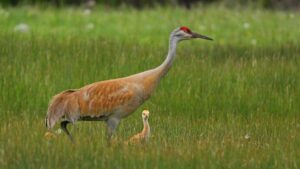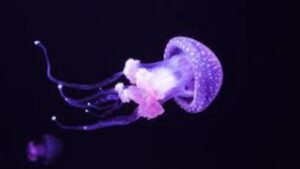Prehistoric Creatures That Are Still Alive today
Summary
Top 30 Prehistoric Creatures That Are Still Alive today. More than 90 percent of species that have lived over the course of Earth’s 4.5-billion-year history are extinct. If you’ve ever wondered what life was like before or during the dinosaurs’ […]
Top 30 Prehistoric Creatures That Are Still Alive today. More than 90 percent of species that have lived over the course of Earth’s 4.5-billion-year history are extinct. If you’ve ever wondered what life was like before or during the dinosaurs’ reign on the earth, here are some of the animals whose ancestors walked alongside the most fearsome predators that ever lived. Here we are to tell you the top 30 prehistoric creatures that are still alive today.
Video: Prehistoric Creatures That Are Still Alive today
Lampreys
Although this prehistoric creatures have an eel-like appearance, these creatures are actually jawless fish. And they’ve got one of the most frightening mouths in the entire animal kingdom. The orifice has a funnel shape that contains sharp teeth used to bore into the flesh of their prey to suck out the blood but only certain species engage in that behavior. Their fossils have been dated back around 360 million years and they seem have evolved very little in that time.
Video: Prehistoric Creatures That Are Still Alive today
Komodo Dragon
You can find this creature in Indonesia today, but that might not be where these iconic lizards came from originally. Scientists recently unearthed a series of Komodo dragon fossils in eastern Australia dating back as far as 4 million years ago. These gigantic lizards can weigh as much or more than a human — and, in fact, they have been known to attack humans. Which is not ideal, since these giant reptiles are somewhat venomous.
Bactrian Camel
You already know about this prehistoric one-humped camels used as transport in the Middle East before automobiles existed. But did you know that they evolved from the two-humped Bactrian camel, which still roams the wilds of the Gobi Desert in Mongolia? Bactrian camels — which sort of look like a cross between Chewbacca and a llama — evolved to withstand temperatures below 0°F and above 100°F some 2 million years ago. Its two humps are used to store fat, which the camel breaks down into energy and water to sustain it during long, dry, food-free periods.
Sea Sponge
Researchers find it difficult to calculate just how long this mysterious creatures have been around. But the oldest fossil of one of these creatures was actually discovered in a rock that was around 750-million years old. Sponges are more abundant but less diverse in temperate waters than in tropical waters, possibly because organisms that prey on sponges are more abundant in tropical waters. Glass sponges are the most common in polar waters and in the depths of temperate and tropical seas, as their very porous construction enables them to extract food from these resource-poor waters with the minimum of effort.
Horseshoe Crab
These arthropods managed to outlast the dinosaurs. Experts have dated these arthropods back to some 450 million years ago, and they’re pretty much unchanged since then. The strange-looking creatures have a hard carapace that protects their body. And while they resemble crustaceans, they belong to a different subphylum. Did you know that these critters have a total of 10 eyes? Why is such a small amount of this blood so expensive? The ultimate fact is Horseshoe Crab is used by the pharmaceutical industry to detect bacteria on new devices such as pacemakers and vaccines.
Platypus
This strange animals were very poorly understood, and some of the 19th century myths that grew up around them – for example, that the monotremes were “inferior” or quasireptilian – still endure. In fact, modern monotremes are the survivors of an early branching of the mammal tree, and a later branching is thought to have led to the marsupial and placental groups. Molecular clock and fossil dating suggest platypuses split from echidnas around 19–48 million years ago. The oldest discovered fossil of the modern platypus dates back to about 100,000 years ago, during the Quaternary period.
Goblin Shark
Sometimes called a “living fossil”, it is the only extant representative of the family Mitsukurinidae, a lineage some 125 million years old. This pink-skinned animal has a distinctive profile with an elongated, flat snout, and highly protrusible jaws containing prominent nail-like teeth. It is usually between 3 and 4 m long when mature, though it can grow considerably larger such as one captured in 2000 that is thought to have measured 20 ft. Indeed a prehistory reddit story.
Alligator Snapping Turtle
This looks like it could be a dinosaur emerging from a swamp, kind of like something you’d see in one of the Jurassic Park movies. But the creature in the picture does exist in real life, although it’s not as big as it seems to appear. That’s not to say the Alligator Snapping Turtle is small, though. Weighing more than 175 pounds, they’re one of the world’s heaviest freshwater turtles. That’s with a carapace that can exceed 30 inches. Some experts estimate their history goes back more than 150 million years.
Vicuña
Speaking of luxury wool, another prehistoric animal known for its fiber is the vicuña, the ancestor of the modern-day alpaca. The two animals look very similar indeed, though vicuñas have a distinctive color pattern, with white undersides and a brown saddle across most of their body. They also native to South America, is the wild ancestor of the alpaca. The family Camelidae first appeared in Americas 40–45 million years ago. Happily, thanks to the work of many dedicated conservationists, there are hundreds of thousands of vicuñas in the wild today.
Polar Bear
Everyone’s familiar with the iconic polar bear these days. But when you step back and think about it, they really do look like something that could have wandered in off a glacier during the last ice age. Actually, polar bears are a lot older than that. In 2010, scientists used a fossilized polar bear jawbone found in arctic Norway to discover that the animal lived around 120,000 years ago. These animals have been lumbering around in the white North since at least that time.
Cassowary
Cassowaries are about the closest-looking thing we have to a “Jurassic Park” velociraptor. These tall, colorful, bipedal birds have a huge slab-like ornament on the top of their head and a sharp, dagger-like claw on their feet. In fact, these birds have been known to attack and even very rarely kill people. Ratites like cassowaries and emus have been around for around 60 million years. These days, you can find cassowaries in northern Queensland and Papua New Guinea.
Coelacanth
It was once believed that these rare fish went into extinct animal list about 65 million years ago. But in 1938 they were re-discovered off the coast of South Africa, and it turned out this animal was even more durable than originally thought. Experts think this discovery evolved into their current form around 400 million years ago. The bright side is this most amazing animal belong in the best of top 10 list.
Ctenophores
Known as ctenophores, these rare wild animal showed up some 700 million years ago. They propel their gelatinous bodies through the water using rows of cilia, or combs. Biologists claim these are the oldest known animals, which means humans could be descended from these things. Hope we enjoy the same longevity as this so called living fossil! Another reddit story for real education. Wonderful display of ‘color x-ray’ photographs gave a real caught on camera looks for this creature.
Gharial
All crocodiles, caimans and alligators are ancient species, and they look the part. But one species of crocodilian — the gharial, sometimes called a gavial — beats them all in the prehistoric-looking beauty contest. Gharials in some form or another have been around for 10 of millions of years, but the modern gharial is the last remaining species of this lineage. Alas, it too is heading towards extinction, with fewer than 200 individual reproducing gharials left in the wilds of India, Bangladesh and Pakistan.
Read More: Top 20 Mythical creature that actually exist
Echidna
Echidnas are an amazing and monster creature that look like a cross between a badger, a porcupine and an anteater. They’re a monotreme, a type of primitive mammal that lays eggs instead of giving birth to live babies, just like their famous relative, the platypus. These animals can also be hard to find in the wild, since they’re small, mostly nocturnal, and live a spaced-out and solitary life. Several species of echidna are also highly endangered — a sad fact, considering that these animals have been roaming the earth for an estimated 17 or so million years.
Musk Oxen
It’s a wonder how these animals still survive, but it’s estimated they’ve been around for 187,000 to 129,000 years. Currently there are several thousand musk oxen in Alaska, though their populations have been declining in recent years. Muskoxen are valued for their meat, and about 260 animals a year are harvested by hunters. Muskoxen are also valued for wildlife viewing, for the artwork made from their horns, and for their soft under wool called qiviut, considered the world’s warmest wool for its weight.
Chambered Nautilus
The chambered nautilus normally lives in the deep ocean around Australia and Indonesia, but if you happen to be in the area of the famous Monterey Bay Aquarium in California, you can see the ancient creatures up-close. These alien-looking corkscrew-shaped animals are among the oldest in the world. Fossils of this animal have been found from 500 million years ago, and they still look exactly the same as today’s descendants.
Babirusa
Babirusas are just like your everyday slightly irritable pig — except for the fact that males have gigantic tusks that grow upwards right through their snouts and curve back towards their heads. In fact, if unchecked for long enough, the tusks can pierce their foreheads. Babirusa are old enough to appear on Indonesian cave paintings some 35,000 years ago. Today, there are several tour operators offering babirusa-watching safaris in the Nantu Forest and Tangkoko Nature Reserve in Indonesia.
Tapir
Like babirusas, tapirs also resemble pigs except for one key feature: a short, elephant-like proboscis that they use for roping food into their mouths. While tapirs look rather porcine, they’re actually more closely related to horses and rhinoceroses. In fact, tapirs have a long, proud history in the fossil record, having first evolved in the Miocene epoch, as late as 23 million years ago. They’ve evolved into numerous species since then, although today there are only five remaining tapir species left across Asia, Central and South America.
Wobbegong Shark
These creatures are specifically trying to hide from you while on a tropical Pacific reef dive, using their flattened bodies, frilly edges and camouflage patterns to blend in with algae-covered rock. These sharks — which have been around since the Miocene epoch, some 11 million years ago — are still found in a couple different species, and most are too small to harm people. A few wobbegong shark attacks have been reported, but there have been no fatalities, and it’s likely that the injured parties just accidently stepped on them or got too close while diving.
Tuatara
They might look like your everyday iguana-esque lizard, but don’t let the superficial appearance deceive you. This ancient reptile is believed to have existed at the same time as the dinosaurs, some 225 million years ago. Today, the tuatara’s body contains clues of this ancient history. Indeed, they actually have a primitive third eye on the top of their head, although it’s hard to see and sometimes grown over with scales in adults. Scientists believe this is an archaic sort of light sensor, which the reptiles use to set their daily and seasonal biological functions.
Chinese Giant Salamander
Salamandroides was the first species of Diplocaulus to be discovered. With a head shaped like a stealth bomber and a body like a salamander, Diplocaulus was an unusual creature that roamed ancient waterways even before dinosaurs appeared. The triangular-shaped skull helped this creature race through the water at top speed. An amphibian, this ancestor of modern salamanders could also slog through muddy swamps with its short legs. The Chinese Giant Salamander, which is an estimated 170 million years old, also the largest amphibian in the world; it can grow even larger than some people, up to 110 pounds and six feet in length.
Whale Shark
The name “whale shark” is a bit of a misnomer. This animal is not a whale at all; in fact, it’s the largest shark — the largest fish, even — in the world. What’s more, it’s been swimming around in the ocean for at least 28 million years. These gigantic sharks can actually be found all around the equator, but seeing them isn’t as simple as that ubiquity suggests. First, you have to rent a boat. And since these animals are endangered, finding them even while out on the water is a tall order.
Lake Sturgeon
Speaking of old fish, another amazing aquatic animal to check out is the lake sturgeon. This ancient fish actually swam around with the dinosaurs, having shown up on the map some 150 million years ago, and it still swims around the United States today. It’s also a bizarre animal in its own right. Lake sturgeon have no scales — only rubbery skin and a few rows of bony scutes — and can grow up to be over 7 feet long and weigh 300 pounds.
Alligator Gar
The freshwater alligator gar is another fish that you definitely do not want to find yourself staring at while swimming in the southern U.S. Even though they pose no threat to humans, these fish are as formidable as their namesake, alligators, with flat snouts full of razor-sharp teeth and a body size that can range up to 300 pounds. This interesting animal also swam with the dinosaurs, and is believed to be 100 million years old. Today, one of the best spots to see alligator gar is at the Tennessee Aquarium.
Caribou
Caribou look like they walked straight out of the ice age — and indeed, they did. These unique animals evolved as long as 2 million years ago. Caribou were already present by the time humans arrived to cross the Bering land bridge and were surely a big part of their diets, just as they are today for Native Alaskans. Females aren’t usually not as big as the male’s ornate head wear, but they do keep them throughout the winter to guard pits in the snow that they’ve dug to get to their food. Then, in the springtime, they fall off.
Siberian Musk Deer
Siberian musk deer are a real thing, and commonly called “vampire deer” due to their scary dentition, but in reality, these animals are strict herbivores. Siberian musk deer aren’t endangered yet, but they’re getting there. They’re often poached for their odiferous musk glands, which can fetch a high price on the black market. It’d be a shame to see them go extinct, especially considering they’ve been around for some 3 and ½ million years. Worthy to be in the list of top 5.
Sand hill Crae
These tall, beautiful birds have long legs that stick far out behind them when they fly, making their silhouette resemble a pointy-tailed dragon when aloft. And while they’re common and not often seen as ancient birds, they actually are: The oldest fossil sand hill crane is at least 2 and a ½ years old. Each spring, sand hill cranes migrate en masse to their arctic breeding grounds, and Kearney, Nebraska, is one of their biggest stopover points. Over half a million birds will gather here at one time and fatten up in the cornfields for the long journey ahead.
Walrus
With their long whiskers and bulbous couch-potato shapes, walruses can sometimes resemble human family members. They’re also perfect snorkelers of the sea floor, vacuuming up clams, crabs and anything else that happens to be located near their mouths Walruses, which date back about 600,000 years, spend a lot of their time hanging out on ice floes, but from May to August they can be found on shore in huge concentrations called haul outs. It’s here that their big tusks come into play, as the males fight for control of the females.
Read More: 20 Insane Homemade Helicopters
The Jellyfish
Scientists do not agree on how long jellyfish have been roaming the oceans, but a broad estimate places the species’ appearance around 500 million years ago. Experts also think that jellyfish are the first and oldest metazoans, which refers to multicellular species that developed after the unicellular creatures known as protozoans. If the Greenland shark has not really had a peaceful evolution process, the Asian jellyfish cannot complain, with its 10-million-year existence as living proof of its incredible adaptability.
Which one is the scariest? What happen if all prehistoric creature become alive today? Share your thoughts in the comment section.
